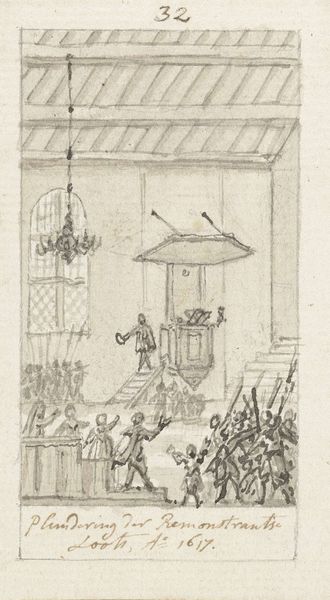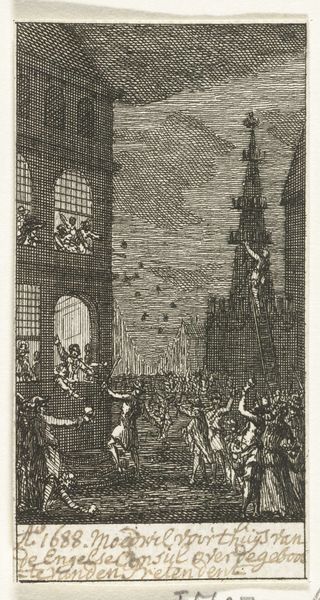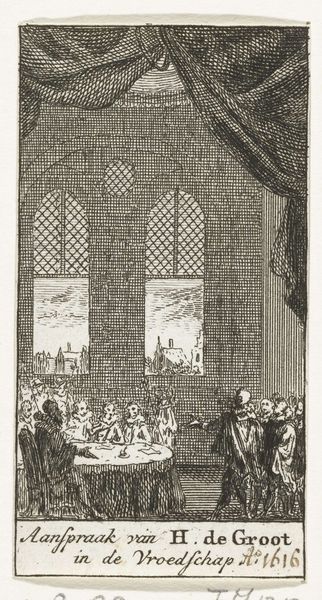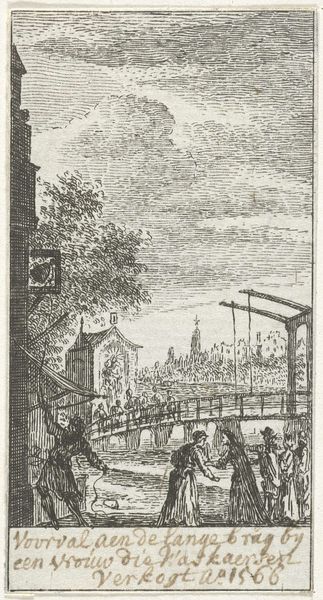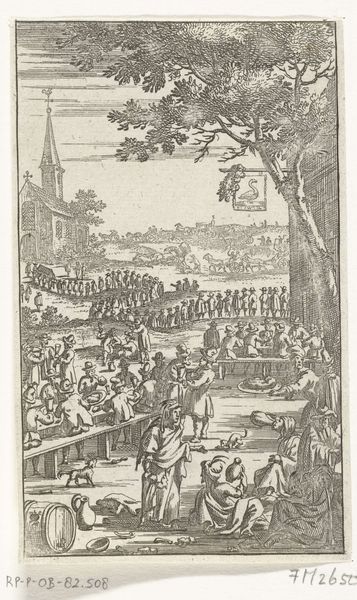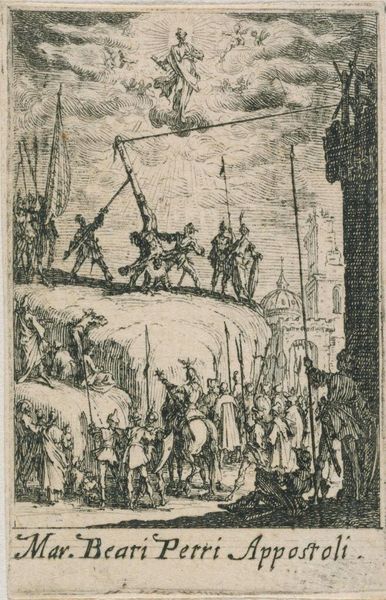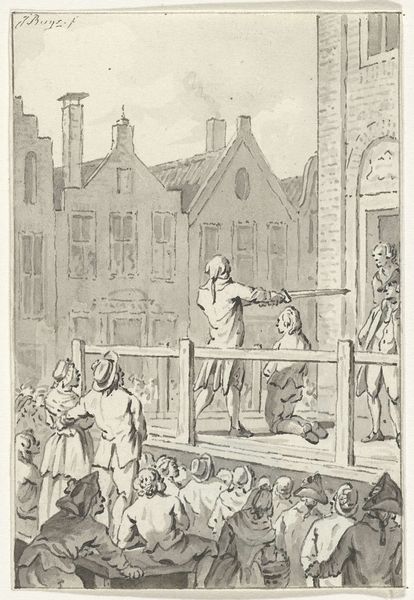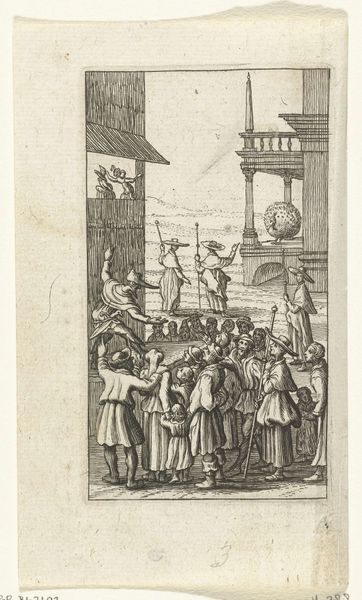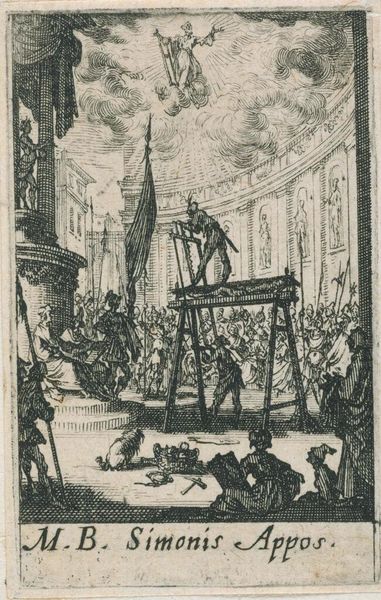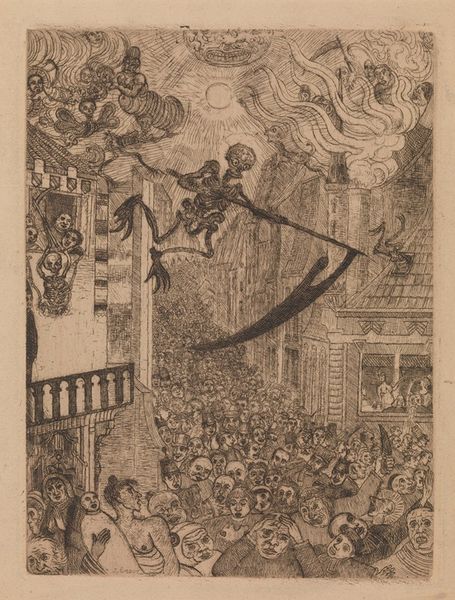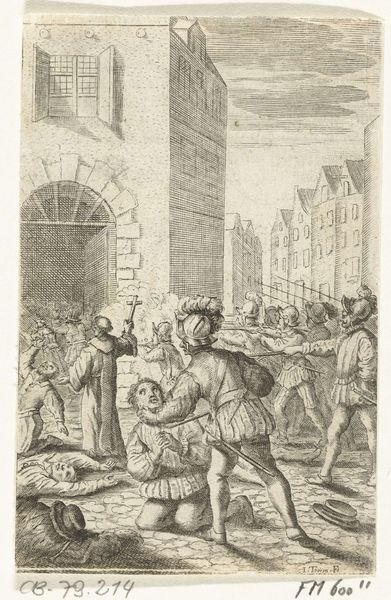
Relletjes voor het huis van de Engelse consul te Amsterdam, 1688 1777 - 1781
0:00
0:00
simonfokke
Rijksmuseum
Dimensions: height 81 mm, width 43 mm
Copyright: Rijks Museum: Open Domain
Simon Fokke made this drawing of riots in front of the English consul's house in Amsterdam sometime in the 18th century. It depicts an event that happened in 1688. But why would an artist from the 1700s want to illustrate an event from the previous century? The drawing depicts a mob pelting the house with stones, their anger palpable. The event occurred during a period of intense political and religious tensions in Europe. England's King James II, a Catholic, was increasingly unpopular, and the Dutch Republic was a Protestant stronghold. The riots in Amsterdam reflected these tensions, with locals protesting the perceived pro-Catholic stance of the English monarchy. The drawing serves as a visual record of this moment of social unrest. Seventeenth-century Dutch society was deeply invested in civil order, so the depiction of riots has political meaning. To understand its significance, it's crucial to consider the complex web of political, religious, and economic factors that shaped its creation.
Comments
No comments
Be the first to comment and join the conversation on the ultimate creative platform.

